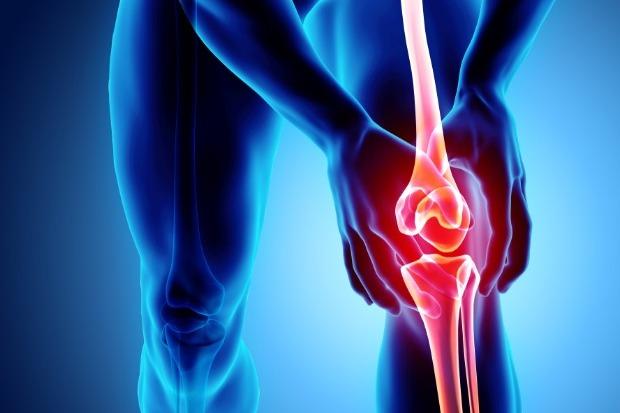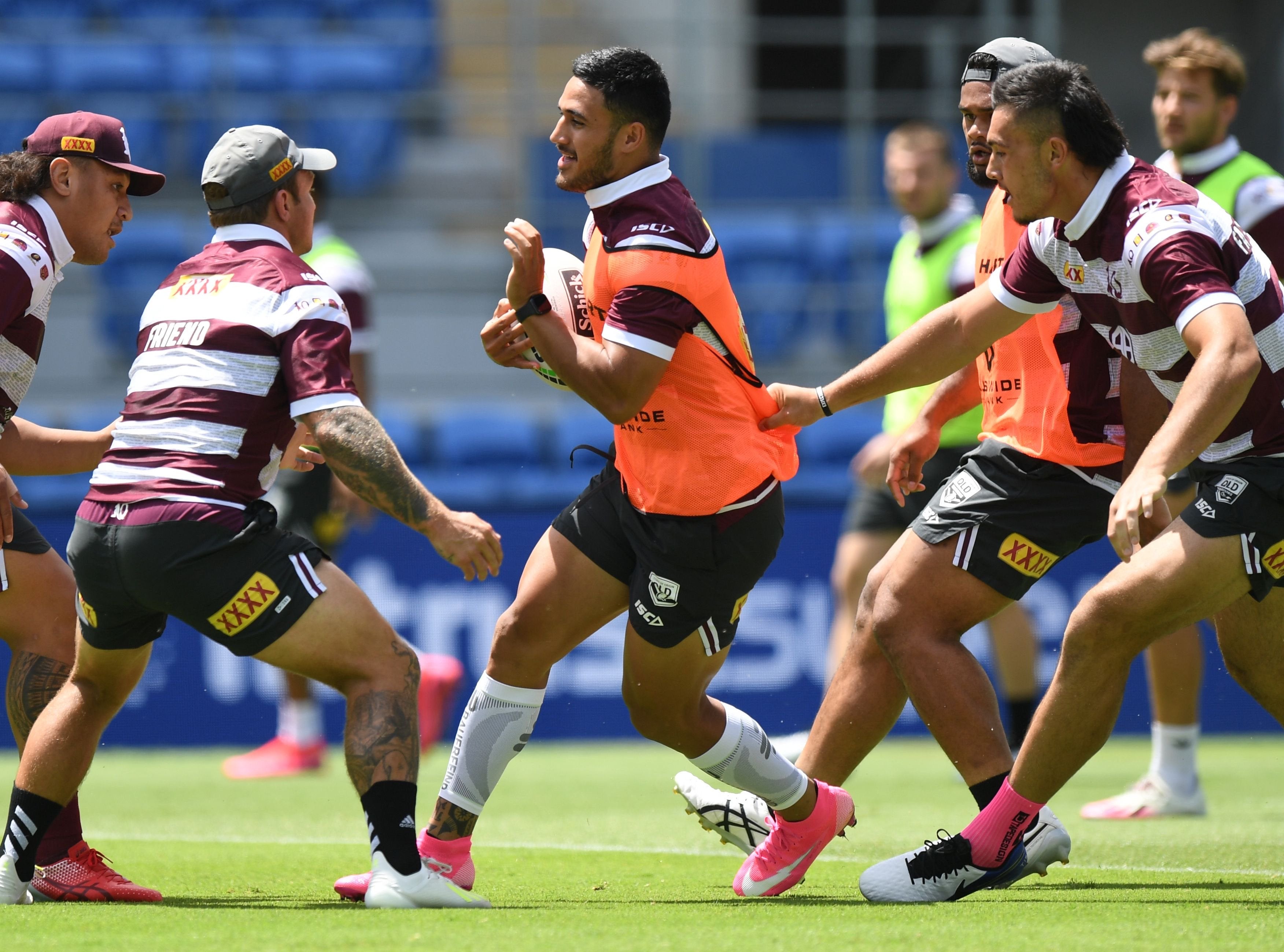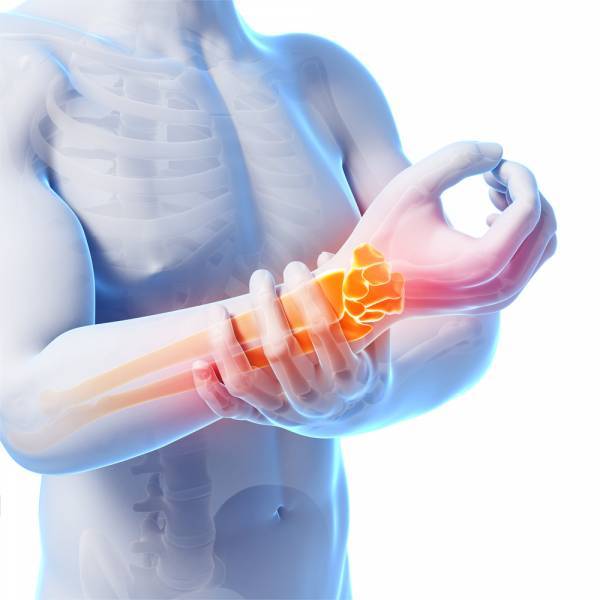Osteoarthritis, or OA, is best summarised as a breakdown of the cartilage which cushions our joints. Although OA can occur in almost any joint in the body, it usually develops in the weight-bearing joints; these include our knees, hips, spine and fingers.
Osteoarthritis is a very common form of Arthritis. As of 2018, 1 in 11 Australians were diagnosed with OA.

In technical terms, Osteoarthritis is the breakdown of the extracellular matrix (ECM). When the ECM becomes compromised it causes articular cartilage to lose its flexibility and tensile strength, consequently impairing joint function. The loss of articular cartilage also increases friction within the joint, causing inflammation and pain. A more detailed explanation of the exact molecular mechanisms can be found in this video.
In the clinic, this will present symptomatically as joint stiffness, and pain associated with weight-bearing and movement. A comprehensive review on the topic by Bijlsma and colleagues in 2011 attempted to classify the phenotypic presentations of OA. Causation came under three subheadings:
- Post-traumatic (acute or repetitive mechanical stress)
- Age-related
- Genetic (biomechanical, metabolic and pain-related).
Post-Traumatic
Degradation of the articular cartilage can occur as a result of acute and/or repeated mechanical stress. As the cartilage breaks down, debris enters the synovial fluid and reacts with cells in the synovial membrane. Inflammatory molecules are then produced, contributing to perceptions of pain. Obesity adds to the amount of mechanical stress experienced by the joint (in the case of hips and knees), and this can speed up the onset of OA.
Age-related
Age implies prolonged exposure of joints to mechanical stress. Age also suggests cell senescence within the joint microenvironment, preventing the maintenance of articular cartilage homeostasis – older people are more susceptible to the detrimental effects of mechanical stress.
Genetic
Joint misalignment can predispose individuals to OA by creating an imbalance in the distribution of mechanical stress. Other genes affecting metabolism within the joint microenvironment also have a negative effect. Pain is the most commonly reported symptom of OA, but it is important to remember that some people are born with abnormal pain perception.
Patients will usually be in their early 60s - overweight and presenting with biomechanical issues that predispose the joint to damage. Not to be confused with rheumatoid arthritis, OA generally has no signs of swelling. If an informative cartoon of a patient’s knee with OA was to be drawn, it would look similar to this:

Figure 1. the knee joint with osteoarthritis as depicted by Bijlsma et al. (2011).
Best Practice?
Treatment for OA includes non-pharmacological, pharmacological and surgical options. It is reported that a combination of non-pharmacological and pharmacological approaches, aiming to reduce pain, are the most effective at improving quality of life. Practitioners are recommended to prescribe guided reintroduction to exercise in combination with NSAIDs.
OA patients are required to improve their ability to bear weight by strengthening associated muscle groups. This can cause a reduction in the mechanical stress experienced by the joint, contributing to a reduction in inflammation and associated pain. Exercise will also have the added benefit of weight loss, the single most effective management of OA as described by Richette and colleagues (2005).
The GenuTrain OA Knee Brace by Bauerfeind compliments this approach. This knee brace can act as a helpful training-aid in the initial stages of exercise reintroduction. This is especially effective for elderly patients who have greater levels of muscle atrophy.

Bauerfeind’s GenuTrain OA effectively unloads one side of the knee joint to alleviate pain and provides extra stability. The amount of tension the brace provides can be adjusted using the Boa Fit closure cap, allowing the patient to wear the brace during all types of activity based on their desired level of unloading. This brace is also produced from a lightweight and elastic material, ensuring all day wearing comfort. The GenuTrain OA also provides interim support to offset mechanical stress during day-to-day tasks. This drastically improves the quality of life for patients suffering from OA and is likely to contribute to their compliance with other aspects of the rehabilitation program.
After multiple knee injuries, Cameron tries the GenuTrain OA for his knee osteoarthritis. To unload the joint, reduce the pain and get back to doing what he wants to do. View Cameron's story:
https://www.youtube.com/
For mild osteoarthritis cases, the GenuTrain A3 Knee Brace would be beneficial in relieving some of the pain in the knee joint. The massaging gel pad featured in this knee brace soothes the tender areas on the inner side of the knee, as well as helping to minimise friction and inflammation in the joint. Designed to stay put all day, a border of silicone nubs is featured at the top which helps to prevent slippage.

References
Review Papers
- Bijlsma J, Berenbaum F, Lafeber F (2011). Osteoarthritis: an update with relevance for clinical practice. The Lancet 377: 2115-2126.
- Xia B, et al. (2014). Osteoathritis Pathogenesis: A Review of Molecular Mechanisms. Calcified Tissue International 95: 495-505.
Original Research
- Dahaghin S, et al. (2005). Prevalence and pattern of radiographic hand osteoarthritis and association with pain and disability (the Rotterdam Study). Annual Rheumatoid Disease 64: 682-687.
- Zhang W, et al. (2003). EULAR Recommendations 2003: An evidence based approach to the management of knee osteoarthritis: report of a task Force of the Standing Committee for International Clinical Studies Including Therapeutic Trials (ESCISIT). Annual Rheumatoid Disease 62: 1145-1155.
- Richette P, Pointou C, Garnero P (2005). Beneficial effects of massive weight loss on symptoms, joint biomarkers and systemic inflammation in obese patients with knee OA. Annual Rheumatoid Disease 70:139-144.
















